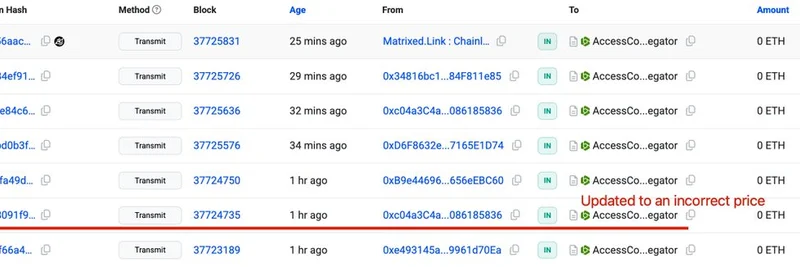In the fast-paced world of crypto, where tribalism runs rampant and opinions fly faster than transaction speeds on Solana, one voice stands out for its no-nonsense take on blockchain tech. Marty Party, a seasoned crypto commentator, macro analyst, and computer scientist, recently dropped a bombshell post on X that's got everyone talking—from death-threat-slinging trolls to institutional builders. If you're knee-deep in meme tokens or just dipping your toes into blockchain, this is a must-read breakdown of why Ethereum's Layer 2 (L2) solutions might be more band-aid than breakthrough, and how alternatives like Solana and SUI are stealing the show.
The Core of Marty Party's Critique
Marty kicks things off by addressing the haters head-on, clarifying he has no beef with Ethereum's main layer (L1). As someone who's built apps on it for years, he knows the ins and outs—its architecture, Solidity coding, and even its Achilles' heels like reentrancy risks that make smart contracts vulnerable to hacks. But here's the kicker: Ethereum's great for low-volume stuff where you don't mind waiting or paying a premium for that rock-solid decentralization. Think of it as the reliable old fax machine in a world that's moved on to instant messaging.
However, when it comes to scaling real-world apps that need speed, low costs, and robust performance, Marty argues newer chains like Solana and SUI are the only serious contenders. These platforms use better programming languages and architectures that sidestep Ethereum's limitations, making them ideal for high-throughput applications. And yes, that includes the wild world of meme tokens, where Solana has become a hotspot for viral launches thanks to its blazing-fast transactions and dirt-cheap fees.
Why L2s Are a Step Backward
Now, Marty saves his sharpest words for Ethereum's L2s—those rollup solutions meant to fix Ethereum's scalability woes. In simple terms, L2s bundle transactions off the main chain and settle them back on Ethereum for security. Sounds good, right? Not so fast. According to Marty, they shatter the core promises of blockchain: permissionlessness and instant finality. With dispute windows stretching up to seven days and centralized sequencers (the tech that orders transactions), L2s start looking a lot like Web2 platforms—think centralized databases with a crypto veneer.
He calls them a rushed band-aid, mismarketed as true DeFi without highlighting the risks. Billions in liquidity are now tied up in bridges and protocols that could be exploited or regulated into oblivion. Marty, drawing from his pre-blockchain days as CTO at Fiserv building high-performance sequencers, isn't buying the hype. "Nothing new in L2," he says, emphasizing that Ethereum needs a full L1 rebuild by 2028 to stay relevant.
For meme token enthusiasts, this hits home. Many memes thrive on Ethereum L2s like Base or Optimism for their hype around "Ethereum alignment," but if Marty's right, these could introduce unnecessary friction and risks. Imagine launching a pump.fun-style meme on an L2 only to deal with slow settlements or centralized points of failure— not the decentralized dream we signed up for.
Solana and SUI: The Real Game-Changers
Shifting gears, Marty highlights why Solana and SUI are pulling ahead. Solana's proof-of-history consensus allows for massive scalability without sacrificing decentralization, as evidenced by its community-driven upgrades. SUI, with its object-oriented model and Move language (designed for safer smart contracts), offers even more extensibility. Institutional players are noticing too, frustrated by Ethereum's clunkiness even for infrequent use.
In the meme token space, Solana's ecosystem is exploding with tools like DEXs, launchpads, and NFT integrations that make creating and trading memes seamless. SUI is catching up fast, attracting developers tired of Solidity's pitfalls. If you're building or investing in memes, these chains promise the speed and safety that could turn a viral joke into a multi-million-dollar phenomenon overnight.
This hilarious reply to Marty's post sums it up perfectly: Ethereum joining the "outdated tech club" alongside Nokia and Internet Explorer. It's a lighthearted jab, but it underscores the sentiment that crypto needs to evolve beyond legacy systems.
Community Reactions and Broader Implications
The post sparked a firestorm of replies, from supporters praising Marty's clarity to critics accusing him of bias against Ethereum. One user pointed out Solana's own validator upgrades, but Marty clapped back, stressing its open-source, community-voted nature. Others defended Ethereum's zero downtime over a decade, while fans lauded Marty's credentials and fearless insights.
For blockchain practitioners and meme token hunters alike, Marty's take is a wake-up call. As the industry matures, choosing the right chain isn't just about hype—it's about fundamentals like security, speed, and true decentralization. Ethereum still has its place as a store of value and for legally binding finality, but for execution-heavy apps like DeFi or meme trading, Solana and SUI might be the smarter bet.
Marty even extends an olive branch to Vitalik Buterin, offering free help to accelerate Ethereum's evolution. Whether you're Team ETH, SOL, or SUI, one thing's clear: the debate is far from over, and staying informed is key to navigating this space.
If this resonates, check out more on Solana's meme token boom or SUI's rising DeFi ecosystem. What's your take— is Ethereum's L2 era a temporary fix or a fatal flaw? Drop your thoughts below!



